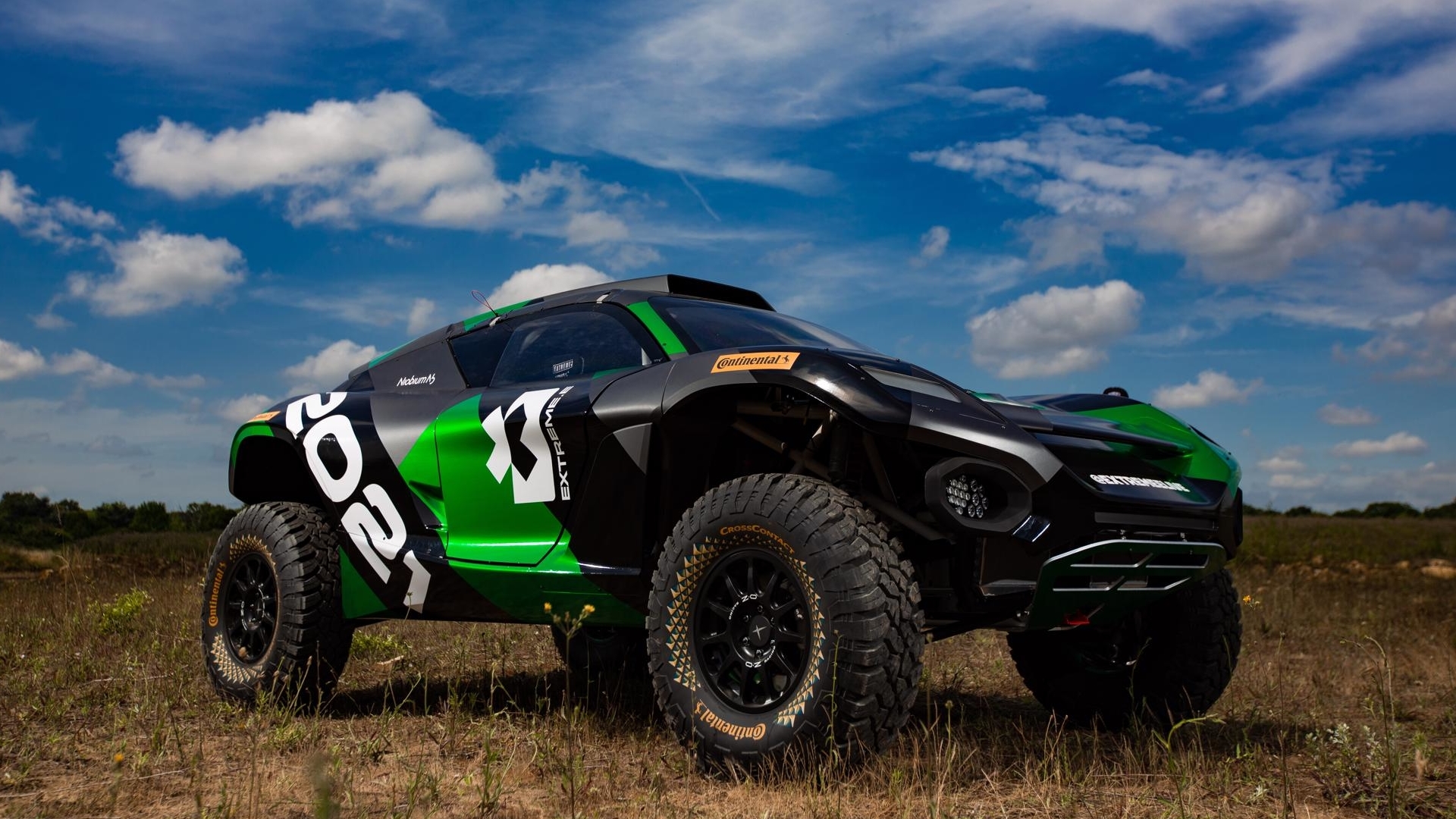

Despite enthusiast issues with EVs, Alejandro Agag—the founder of Formula E—wants to make sure that the sort of titanic clashes between human and machine continues well past the internal combustion engine’s curtain call. He is an enthusiast at heart and his latest venture has us at attention and ready to strap on our helmets. Meet the rally-ready Odyssey 21.
Debuting at the Goodwood Festival of Speed, the Odyssey 21 is the first development car for Agag’s hopefully forthcoming Extreme E off-road racing series. The Odyssey 21 was built in conjunction by Spark Racing Technology, the Fred Vasseur-led company which backed Formula E since its introduction in 2012, as well as partnered with Erik Buell for his new all-electric motorcycle company; as well as Williams Advanced Engineering, which recently partnered with Lotus to build its electric hypercar; and Continental Tires. As a result of that three-way partnership, the Odyssey 21 prototype’s spec list belies a racecar that’s ready to tackle all sorts of environs.




Powering the Odyssey 21 is a Williams Advanced Engineering battery developing 550 horsepower and capable of sending the 3,630-pound race buggy to 62 miles per hour in just 4.5 seconds. Yet, unlike its gasoline-powered cousins, the Odyssey 21 can clip 62 mph while it climbs a 56-degree incline. That’s a seriously impressive feat. The tubular frame is a niobium-reinforced steel alloy with an additional roll cage to provide the driver with all the safety they could ask for.
As you’d expect from a Dakar-esque rally racecar, the suspension on the Odyssey 21 is made to take a beating. Three-way adjustable mono-dampers are locked into a double-wishbone design at all four corners and give the Odyssey 21 15-inches of travel. There are also hydraulic bump and rebound stops, as well as six-piston Alcon brake calipers to halt the Odyssey 21’s vigorous momentum.
Differentiation between the cars for prospective automakers was also considered, as Agag intends his Extreme E series to be similar to DTM, Le Mans, and IMSA in terms of manufacturer-led support. According to the company, the base of the Odyssey 21 racecar can be outfitted with an automaker’s own electric drivetrain and attach “select areas of bodywork, such as the engine cover, front and rear bumpers, side skirt, and lights in a bid to replicate [its] everyday car models.”

The Odyssey 21’s designer Théophile Gouzin, who’s also the Technical Director of Spark Racing Technology and the man who designed the Formula E Gen1 and Gen2 car, said, “Our challenge was to build a car that could face all the variations in surface and terrain that will be thrown its way, which will include gravel, rock, mud, ice, snow, water and sand, too. Straight out-of-the-box in Season 1, the ODYSSEY 21 and its performance is going to be very impressive, exceeding the power and torque of World Rally Championship and rally raid cars. The numbers are mind-blowing, really.”
While Extreme E is still in its infancy, the proposed setup and racing are fairly similar to that of the current rules of World Rallycross. As such, “Extreme E will use a traditional round-robin format with two groups of six teams—with the top four progressing to the knock-out stage and each driver going head-to-head to earn a place in the final.” And stages will be anywhere between six and ten kilometers in length. As for the tracks, Extreme E is looking to highlight some of the most beautiful and climate-change threatened areas of our planet. Places where racing couldn’t have been accomplished with traditional motorsports, i.e. the Amazonian rain forest and Arctic Circle.

Unlike every other racing series ever, Extreme E’s base of operations will be the RMS St. Helena, a ship that will be the home to the teams, garages, hospitality, and have broadcast capabilities for global broadcast. However, Extreme E still has the monumental task of becoming a reality and sticking around as few upstart racing series actually survive.
It’s difficult to develop the sort of lasting brand cache of older championships. Yet, the climate that gave rise to turbocharged 1,000 horsepower monsters and spine-tingling wails, is changing. Electrification has been pushed to the forefront and series like Formula E has made great strides into the public’s consciousness. This success has led to Agag’s belief that electric off-road racing will be just as successful, if not more.

Speaking ahead of the Odyssey 21’s Goodwood debut, Agag said, “The Odyssey 21 is unlike anything else in motorsport. The cutting-edge technology our industry-leading partners have employed in its design and construction has resulted in a stunning car, capable of the highest performance in the toughest and most varied environments on the planet. Adding, “Extreme E’s combination of top-level sporting competition and ultra-demanding environments will also prove to be a significant research and development platform for manufacturers, driving further advancements in sustainable mobility. Whether it’s in the Arctic, Himalayas, Amazon, Desert or on Indian Ocean Islands, this car will showcase the ability of E-SUVs, not only to motorsport enthusiasts but also to consumers who are looking to make their own difference to the planet by choosing an electric SUV.”
Testing of the Odyssey 21 will begin this September and Extreme E is hoping that the first 12 cars from Spark Racing Technology to be delivered by March of 2020. The outfit also has its fingers crossed for a first race to occur in early 2021.